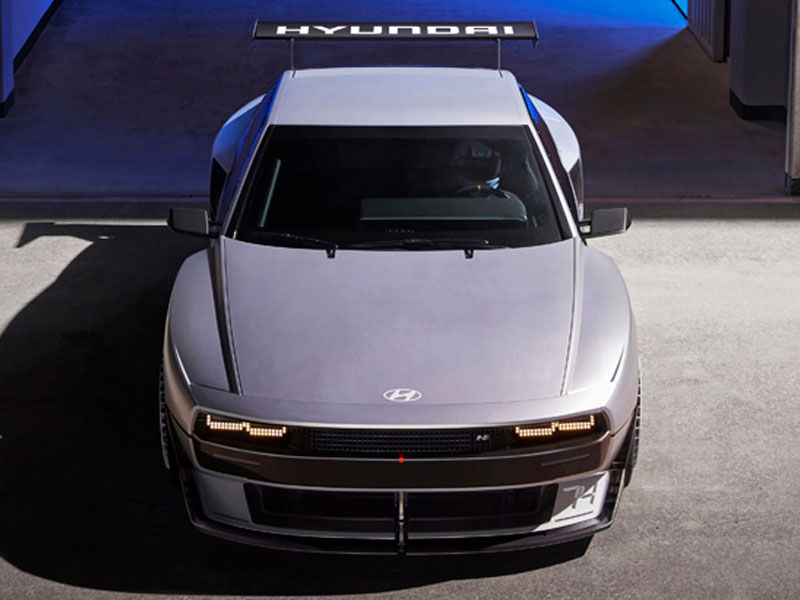Hyundai has emerged as a prominent player in the automotive industry not only for its technological advancements but also for its compelling design aesthetics. This article delves into the intricacies of Hyundai’s design language, exploring how aesthetics contribute to the brand’s identity, consumer perception, and market success.
The Evolution of Hyundai’s Design Aesthetics
Hyundai’s journey in design aesthetics showcases a blend of innovation, cultural adaptation, and consumer-centric approach.
Early Influences and Development
- Hyundai’s early designs focused on functionality and affordability, influenced by Japanese and European automakers.
- The appointment of Peter Schreyer as Chief Design Officer in 2006 marked a significant shift towards more expressive and sophisticated designs.
- Introduction of “Fluidic Sculpture” design philosophy in 2010 set the stage for Hyundai’s evolution in design aesthetics.
Fluidic Sculpture Era
- Characterized by fluid lines and dynamic forms, Fluidic Sculpture aimed to evoke a sense of motion and grace.
- Models like the Hyundai Sonata and Hyundai Santa Fe gained acclaim for their bold and distinctive designs.
- Fluidic Sculpture established Hyundai as a trendsetter in automotive design, setting new standards for aesthetics and functionality.
Also Read : Unraveling Hyundai’s Design Philosophy
Sensuous Sportiness Philosophy
- Recent years have seen Hyundai embrace the “Sensuous Sportiness” design philosophy.
- This approach blends sensuous shapes with sporty characteristics, aiming to captivate emotions and convey a dynamic presence.
- Models such as the Hyundai Tucson and Hyundai Elantra embody this philosophy with their striking exteriors and sophisticated interiors.
Key Elements of Hyundai’s Design Aesthetics
Hyundai’s design aesthetics are characterized by several key elements that define its vehicles and contribute to their visual appeal.
1. Cascading Grille
- The cascading grille has become a signature feature across Hyundai’s lineup.
- It symbolizes modernity and strength, enhancing the vehicle’s front-end design.
- Adaptations of the grille design vary across models, reflecting Hyundai’s commitment to individualized aesthetics.
2. Parametric Dynamics
- Introduced with the Sensuous Sportiness philosophy, parametric dynamics refer to intricate patterns and textures found in Hyundai vehicles.
- These elements add depth and visual interest, enhancing both exterior and interior design aspects.
- Examples include the geometric patterns integrated into lighting signatures and interior surfaces.
3. Sensuous Sportiness
- Central to Hyundai’s current design language is the concept of Sensuous Sportiness.
- This philosophy emphasizes emotional design elements that evoke passion and excitement.
- Dynamic proportions, sculpted surfaces, and a sense of movement characterize vehicles designed under this principle.
Impact of Hyundai’s Design Aesthetics
Hyundai’s commitment to design aesthetics goes beyond visual appeal, influencing consumer perception, brand loyalty, and market positioning.
Global Recognition and Market Penetration
- Hyundai’s distinct design aesthetics resonate globally, contributing to its expansion into diverse markets.
- The brand’s ability to adapt its designs to local tastes while maintaining global appeal underscores its design versatility.
Consumer Preference and Brand Loyalty
- Consumer surveys highlight design as a primary factor influencing car purchase decisions.
- Hyundai’s focus on aesthetics enhances consumer perception of quality, reliability, and modernity.
Competitive Edge and Differentiation
- Distinctive design elements give Hyundai a competitive advantage in the crowded automotive market.
- The brand’s unique design identity helps it stand out among competitors, reinforcing its market position.
Future Directions: Sustainability and Innovation
Looking ahead, Hyundai continues to innovate in design aesthetics while embracing sustainability and technological advancements.
Sustainable Design Practices
- Hyundai integrates sustainable materials and eco-friendly design practices into its vehicles.
- This approach aligns with global efforts towards environmental responsibility and addresses consumer demand for greener transportation options.
Technological Integration
- Advancements in electric vehicles and autonomous driving technologies influence Hyundai’s design strategies.
- Integration of advanced technologies enhances both functionality and aesthetics, shaping the future of Hyundai vehicles.
Human-Centered Design Innovations
- Hyundai prioritizes human-centered design principles to enhance user experience and comfort.
- Interior layouts, connectivity features, and ergonomic considerations are integral to enhancing overall vehicle appeal.
Conclusion
In conclusion, Hyundai’s commitment to design aesthetics is a cornerstone of its success in the automotive industry. From the evolution of Fluidic Sculpture to the current Sensuous Sportiness philosophy, Hyundai continues to innovate and set new standards in automotive design. By appreciating Hyundai’s design aesthetics, consumers gain insight into the brand’s dedication to innovation, aesthetics, and sustainability, paving the way for future advancements in automotive design.
(source)
Originally posted 2024-06-27 03:32:24.
